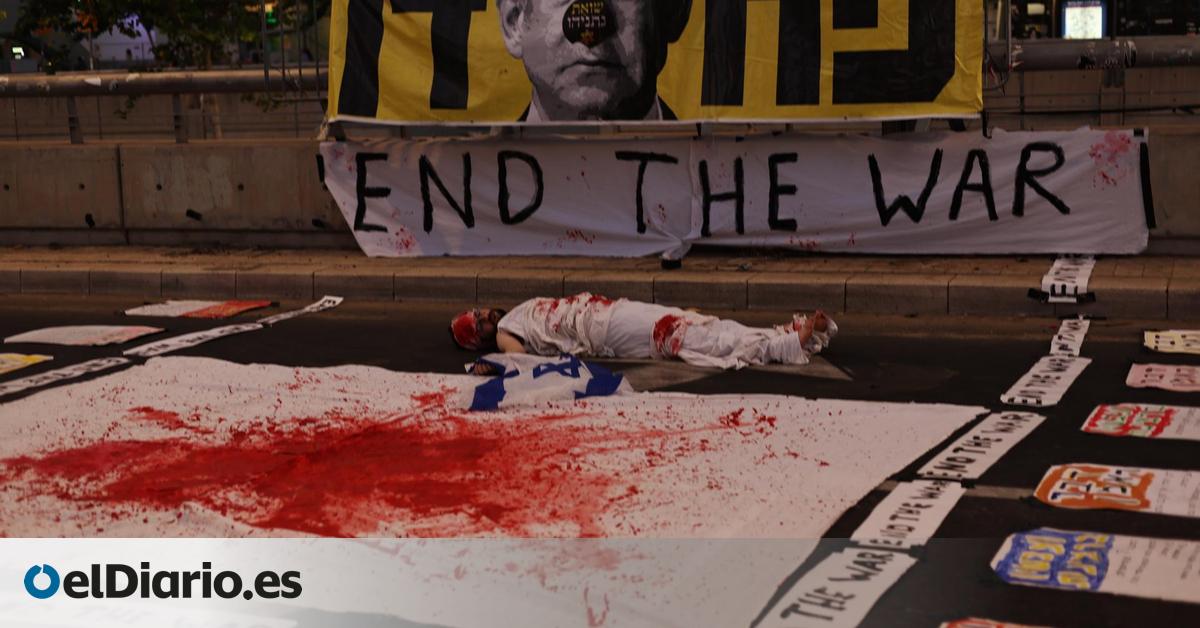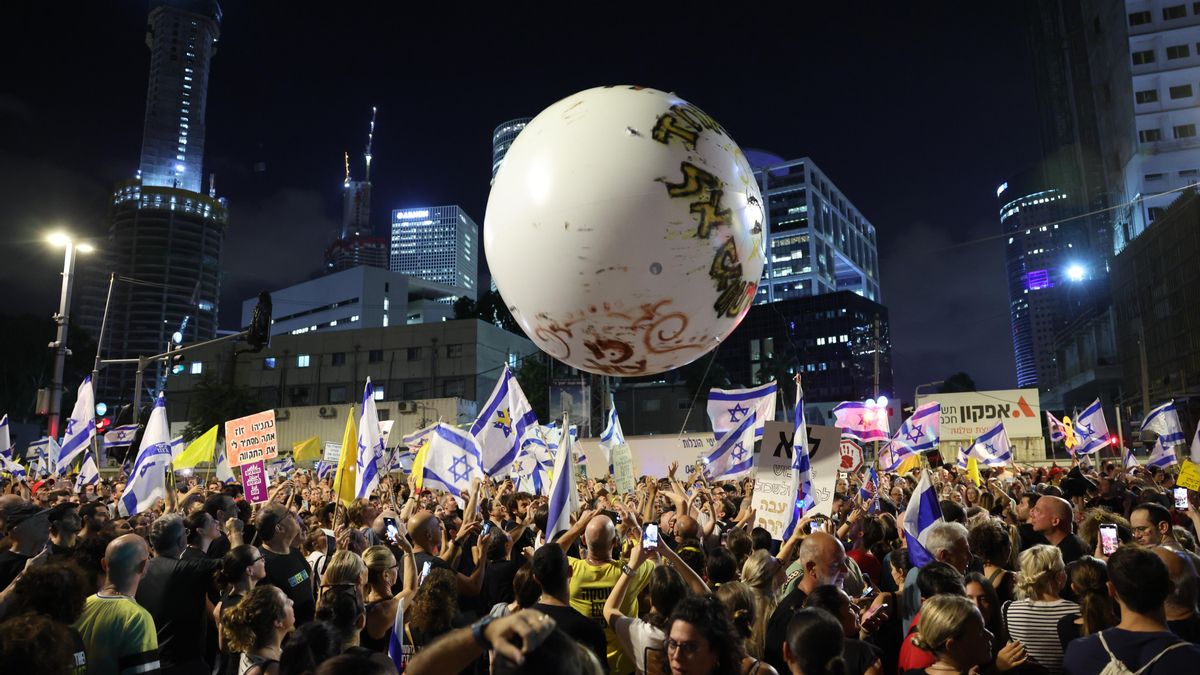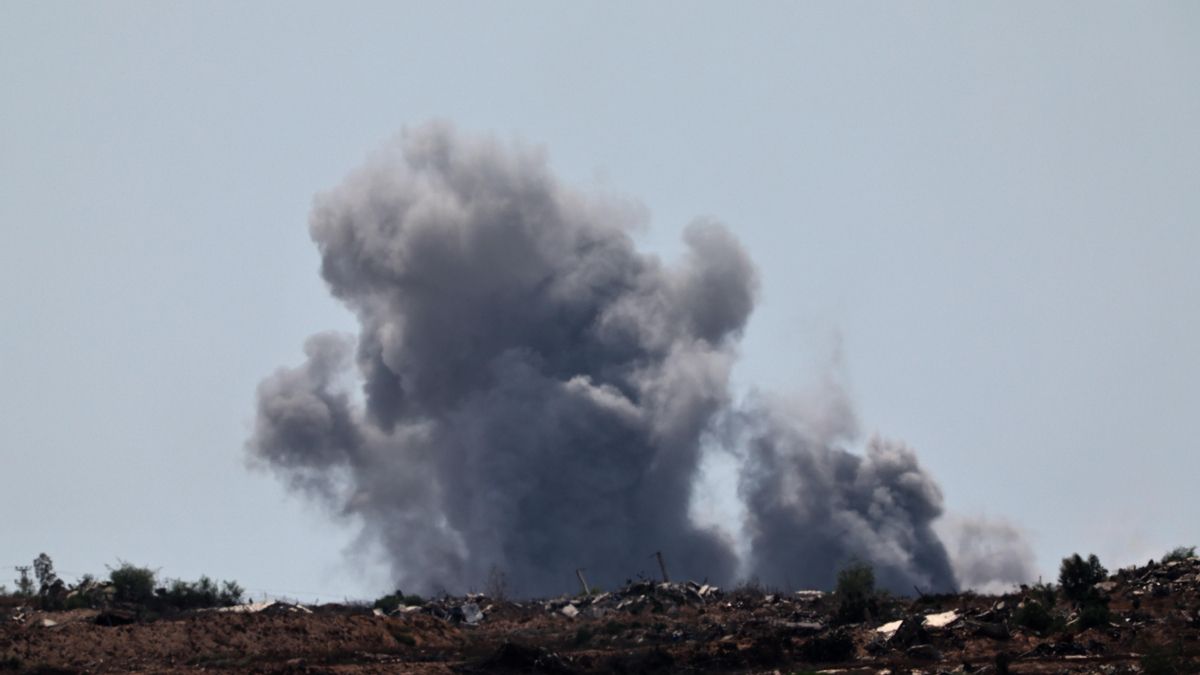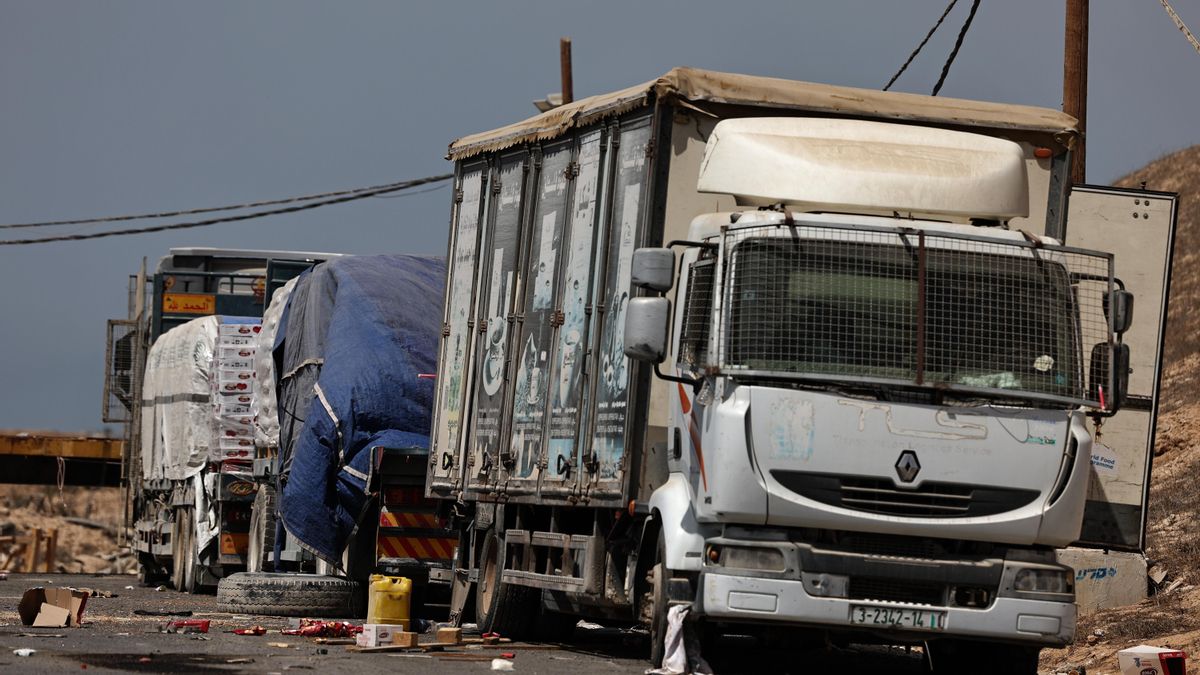
Despite international warnings and criticism, as well as the mass protests in Israel, Prime Minister Benjamín Netanyahu continues with his plan to completely occupy Gaza City, approved on Tuesday night by the Minister of Defense, Israel Katz. Israeli media report that thousands of Gazati have already fled from the city to the imminent Israeli operation. The perspectives are catastrophic for the Palestinians, who already suffer from the massive hunger and displacement, so that the Arab mediators are trying to negotiate the fire that stops, for the moment, that operation and open the door at the end of the brutal Israeli offensive against the strip – which has killed more than 62,000 people.
The Islamist group Hamás has given its approval to a new proposal of agreement presented by Egypt and Qatar, which includes the release of a dozen of the kidnapped on October 7, 2023 that are still alive and the gradual withdrawal of the Israeli troops of Gaza. But Israel has not yet accepted negotiating based on that proposal and Netanyahu had said that it would only accept an agreement that involved the release of all hostages (about 50, of which it is believed that more than half are dead). The only comment that the Prime Minister has made so far is that “Hamas is under immense pressure” and, therefore, has accepted the proposal.
The Catarí Government, the main architect of the previous agreements, said Tuesday that the current proposal seeks to “reach a comprehensive agreement to end the war” and that it is “almost identical” to which it developed the special envoy of Donald Trump, Steve Witkoff, months ago. The Catarí Foreign Ministry spokesman, Majed Al Ansari, has declared from Doha that it cannot be “openly optimistic” because there have not yet progress, although he has indicated that the content of the proposal that is on the table coincides with the conditions that Tel Aviv accepted in rounds of previous negotiations.
The last one ended about one month ago, when Witkoff and Israeli negotiators retired, holding Hamas for the failure of contacts, who have not paid off since last March, when Israel broke the agreement of Alto El Fuego and resumed the offensive against Gaza, expanding its presence in the strip until dominating 75% of the territory.
President Donald Trump, through his envoy, has not put pressure on Netanyahu again to accept an agreement, as he did shortly before reaching the White House, when he forced the signing of a high fire between Israel and Hamas that was in force between January and March last. Moreover, the main ally and support of the Israeli government has adopted its thesis that it is necessary to end Hamas before ending the war in Gaza, an objective that military analysts and strategists consider unattainable.
Internal pressure
On Monday, Trump recalled that it was he who “negotiated and achieved the release of hundreds of hostages” – although, between mid -January and early March, they were released just over 30 captive and captive Israeli (in exchange for about 2,000 Palestinian prisoners) -. In May, Hamas gave the Israeli-American hostage Edan Alexander as a gesture of goodwill towards the US, which negotiated his release from other hostages.
In recent months, Trump has several times against Islamists. “We are only going to see the return of the hostages when we confront and destroy Hamas !!! The sooner it happens, the more chances of success there will be,” the Republican wrote in his Truthsocial social network this Monday.
Both Trump and Netanyahu seem to ignore the message of the families of the kidnapped and many other Israeli who, last weekend, went into mass to the street (more than 2 million people, according to the organizers) to request the end of the war through an agreement that brings back to the hostages. The forum of the Families of the hostages and the disappeared has summoned more mobilizations for Wednesday, near the border with Gaza.

Matan Zangauker’s mother, one of the hostages, said Tuesday at a press conference that will not allow Netanyahu to sabotee again the possibility of an agreement. “All the people of Israel will not allow them to lose the last chance to bring back me and all hostages, alive and dead,” said Einav Zangauker.
The government coordinator for hostages and missing, Gal Hirsch, has told relatives that all consultations “are held 24 hours a day, under absolute media silence.” “In general, and especially at a time like this, it is better to be so,” he said, apologizing for not being able to share information, according to the Israeli newspaper Haaretz. Other Hebrew media have indicated that the Executive will reject the proposal.
As has already happened on other occasions, the most radical partners of the government coalition headed by Netanyahu are in principle to any agreement with Hamas, because their declared objective is the occupation of the strip and restore Jewish settlements there (which Israel dismantled in 2005).
Forced attacks and displacement
On the field, the Israeli army continues the preparations to implement the guidelines of the government to take all city of Gaza, the main city of the Strip and that currently hosts almost one million people – many of them displaced from northern Gaza, which has been razed and emptied by Israel in the last months.
The Israeli defense minister, Israel Katz, approved last night the plans of the Israeli army to conquer the city, which include the call to ranks of tens of thousands of soldiers in the reserve, according to local media.
More than 60,000 reservists will receive orders today to appear in the next two weeks, while another 70,000 must extend their current service for 30 or 40 more days, according to the Israeli newspaper Maariv. The plan also contemplates the evacuation of the entire population of the city.
The Chief of the Staff of the Defense met with the military commanders on Monday and instructed them to “continue the campaign, with special emphasis on increasing attacks against Hamas in Gaza City.” “We are preparing and approving plans,” Eyal Zamir said, asking all the formations that are ready to continue military operations in the strip. “We will continue to operate and create the conditions for the release of our hostages,” Zamir said in a statement, who had opposed the executive’s plans to occupy the entire strip and expand the presence of the soldiers in the enclave due to the risk involved for their men and for the kidnapped.
Israeli attacks against Gaza City and military activity in the eastern areas that have already been evacuated in the past weeks have increased since the Israel security cabinet approved the plans for their occupation on August 8. The tanks have taken control of the Eastern suburb of Al Zeitun and have not ceased to shoot against the Sabra neighborhood, where they have killed three people, according to the Reuters news agency.
“It has been one of the worst night in Sabra and Ciudad de Gaza, with explosions that are heard throughout the city,” said Reuters Nasra Ali, 54, mother of five children and resident of Sabra. “I planned to leave my house when I heard that there was a possible fire.
Last weekend, the army announced that it was preparing to “move civilians from the combat areas” – this is, expel – to the south of the Gaza Strip and, for that end, from Sunday it would allow the entry into the enclave of “refuge materials” (campaign stores, mattresses, blankets, kitchen utensils, etc.).
The United Nations and other humanitarian organizations have alerted what the forced displacement of hundreds of thousands of people from Gaza’s city to the coastal areas of the South can be, where the displaced camps are already saturated because Israel has sent there to the inhabitants of many of the localities that it has occupied and emptying from the beginning of the war (including the cities of Rafah and Jan Yunis, the most populated in the south).

The UN has described in a statement as “positive progress” the fact that Israel will allow some materials that it had banned since March, “since the need for shelters and household items has increased.” “However, it is worrying that the announcement of the Israeli authorities will relate to the imminent expansion of military operations in Gaza City. This would displace thousands of people, once again, to an overcrowded area in the south of the strip, practically devoid of infrastructure and basic services, such as water, food and medical care,” he lamented.
United Nations and the organizations with which they work in Gaza estimate that 1.35 million people need urgent accommodation and 1.4 million lack basic domestic utensils. Since Israel imposed a total blockade of humanitarian aid last March – which partially lifted at the end of May – almost 800,000 people have been displaced again and need a shelter, because they have had to leave behind what they had or it has deteriorated.

“The Israeli plan to intensify military operations in the city of Gaza will have a terrible humanitarian impact on people who are already exhausted, malnourished, disconsolate, displaced and deprived of the basics to survive. Forcing hundreds of thousands of people to move towards the south is a formula for a greater disaster and could be equivalent to a forced transfer,” the UN denounced. More than 200 international and local NGOs have required that they are allowed to introduce all kinds of shelter material and another help in Gaza, in large quantities, in order to deal with the needs of the more than 2 million gazaties.
One of the outstanding points of the Alto Fire Agreement is the entry of more humanitarian aid to the Strip, where practically the entire population goes hungry and more than 260 people have died from malnutrition, including 112 children, according to data from the Ministry of Health.
Source: www.eldiario.es

